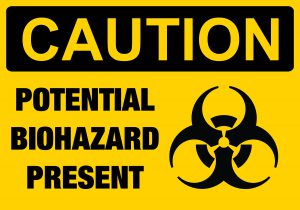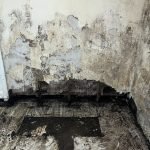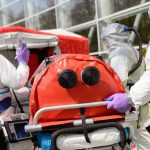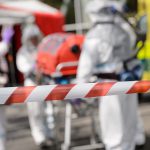What Training Do You Need To Get Biohazard Cleaning Qualifications
What is biohazard cleanup? Simply put, when a violent crime, suicide, or accident takes place, a professionally trained individual is needed to properly sanitize and dispose of any biohazards such as blood or bodily fluids. Because this is a potentially dangerous job, training on how to properly handle the cleaning and removal of these substances is crucial.
What are biohazard materials?
Biohazardous materials include blood, vomit, feces, urine, or any other human waste or bodily secretion or material. Sharp objects such as needles and other medical or instrumental waste also fall into this category. Because the risk of infection or contamination is so high in these substances, it is imperative that those who perform the job of biohazard cleanup are properly trained and equipped.
Biohazard Cleaning Qualifications
Although no formal certification is required to perform this job, the Occupational Safety and Health Administration does mandate that any employee at risk of being exposed to biohazardous materials complete the proper training. In fact, many companies offer on-the-job training for proper practices when cleaning and handling cleanup of bodily fluids.
Because there are no certification or education requirements, many people believe that anyone can work in biohazard cleanup. However, the job requires long hours and emotionally taxing views. Given the nature of events that require biohazard cleanups, you may be exposed to grisly sights and tragic aftermaths. Even if you are not squeamish about blood and other bodily fluids and waste, biohazard cleanup may prove too much on an emotional level for many people to handle.
On the other hand, biohazard cleanup can be a rewarding job. Think of the emotional weight you as a biohazards sanitizer are lifting off of the effected family, and even the community at large. Cleanup of biohazardous waste is a public service as well as a favor to victims and friends and relatives of the victims. Prevention of contamination is vital to a healthy community.
[otw_shortcode_button href=”/request-help/” size=”medium” icon_position=”left” shape=”square” color_class=”otw-green”]Request Help[/otw_shortcode_button]




